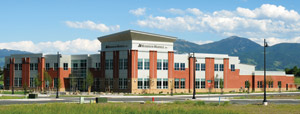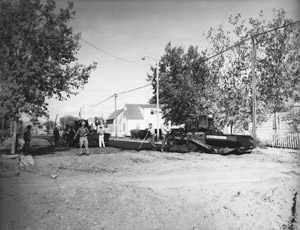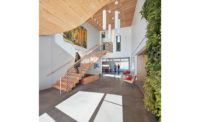Like the rest of America, post-World War II Montana was poised for growth and prosperity after years of sacrifice and worry. Mining and ranching had been the predominant industries in the state, but after the war, returning veterans needed work – and the state’s infrastructure needed improvement.



That meant construction jobs would pave the way for progress and a brighter future.
In Helena, a highway department bridge engineer named John Morrison saw a need and an opportunity to get Montana out of the mud with improved roads and infrastructure. After 15 years of working for the state highway department, Morrison started Morrison Engineering Co. in 1945. A year later, his friend and colleague, Joe Maierle, joined the firm, and in 1947, the partners incorporated as Morrison-Maierle Inc.
Today, Morrison-Maierle is the oldest and largest engineering firm in Montana and has worked in 19 states and 14 countries.
Rodger Foster, a retired Morrison-Maierle director of marketing and current vice president who has been with the firm since 1975, says one of its first highway contracts called for surveying the routing of an interstate highway through the state. “Our use of aerial photography was the first such use of that technology for that purpose,” he says.
In the 1950s, Morrison-Maierle also moved into airport work. Its early airport jobs included a paving project at the White Sulphur Springs Airport and parking area resurfacing for the Helena Airport.
Ron Mercer, airport director for the Helena Regional Airport Authority since 1980, says the authority has always been calling on Morrison-Maierle for its engineering needs.
“The firm’s dependability and the timeliness of its work, combined with its ability to keep projects under budget, keeps us calling it back,” Mercer says.
Morrison-Maierle’s first listing on Engineering-News Record’s Top 500 engineering firms was in 1965, when it came in at 296. Two years later it would open an office in Bozeman to meet an increased workload. Today, the firm has six regional offices throughout Montana and others in Utah, Wyoming and Arizona.
Morrison-Maierle designed the 4.5-mile Interstate 15 highway section between Helena and Great Falls in 1969, a project that was awarded first place in the Best New Construction category of the annual Montana Highway Achievement Awards.
The highway follows portions of the scenic Missouri River Canyon, where it climbs 300 ft over a 5% grade and passes through a 100-ft cut in a saddle on a high ridge.
In the early 1970s, Morrison-Maierle began designing primary and secondary treatment systems and other water-quality programs.
More recently, the company’s wastewater engineers assisted the city of Missoula with improving its wastewater treatment facility and increasing its capacity to meet greater environmental discharge requirements under the Clark Fork Voluntary Nutrient Removal Program. The program focuses on returning cleaner, non-nutrient-laden water back into the environment.



Post a comment to this article
Report Abusive Comment